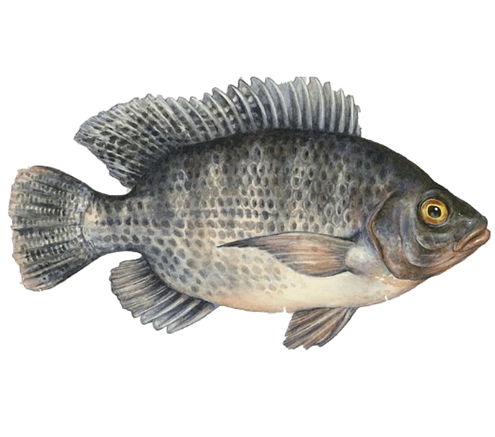|
Nile TilapiaIn China, the term "tilapia" commonly refers to a general designation for several farmed tilapia fish species, including: Tilapia, Nile tilapia, Blue tilapia [Oreochromis aureus], Mozambique tilapia [Oreochromis niloticus], Red tilapia [Red Tilmpa], Galilean tilapia [Sarotherodon galilaeus], Marine tilapia, GIFT tilapia, New GIFT tilapia, Zill's tilapia, Nile tilapia (Oreochromis niloticus × Oreochromis aureus), Mud carp, etc., as well as various hybrid offspring from different combinations.
Tilapia (Oreochromis niloticus), commonly known as the "African crucian carp," belongs to the Cichlidae family and includes more than 100 species across three genera: Oreochromis, Tilapia, and Sarotherodon. Native to Africa and the Middle East, tilapia is characterized by strong adaptability, omnivorous feeding habits, rapid growth, and high reproductive capacity—traits that make it highly suitable for aquaculture. As a result, it has been introduced to numerous countries and regions. Among various tilapia species, the Nile tilapia (with larger individual size) is the most widely introduced and farmed, belonging to the genus Sarotherodon. In 1978, the Chinese Academy of Fishery Sciences introduced Nile tilapia from Sudan. Nile tilapia has a laterally compressed body and a medium-sized head. The caudal fin of juveniles is truncate at the posterior margin, while that of adults is fan-shaped. Its body color ranges from yellowish-brown to tan, gradually lightening from the back to the abdomen, with white throat and chest. The lateral line is divided into upper and lower segments: the upper segment has 18–24 scales, the lower segment has 12–22 scales, and the total number of scales along the lateral line is 30–35 (typically 32–33). There are nine black vertical bands on both sides of the body, perpendicular to the body axis: seven below the dorsal fin and two on the caudal peduncle. The edge of the dorsal fin is black, and the dorsal and anal fins have regular black 斑纹 (markings). The edges of the caudal and pectoral fins are red.
As a tropical fish, Nile tilapia has a fecundity of 1,000–2,000 eggs. Although its spawning quantity may be lower compared to other fish, tilapia excavates nests for reproduction, and females incubate eggs and rear larvae in their mouths, resulting in extremely high survival rates for their offspring. Tilapia are omnivorous, primarily feeding on phytoplankton, the aquatic insects, small fish, and shrimps, with a huge appetite. Due to failed farming attempts, species escapes, and poor management, Nile tilapia has gradually wilded in China, becoming one of the common alien invasive species and a new dominant species in freshwater areas of southern China. Currently, wild individuals of Nile tilapia exist in major rivers of Guangdong Province, where natural populations have been established. The rapid increase in Nile tilapia populations has caused severe ecological problems, leading to its inclusion in China's list of alien invasive species.
Blue Sea Fishery-China Tilapia Supplier, China Tilapia Fillets Supplier, China Tilapia Producer, China Tilapia manufacturer, China Tilapia seller, China Tilapia Exporter, China Tilapia Factory, China tilapia fillets producer, China tilapia fillets manufacturer, China seafood Supplier, China Seafood Exporter, Tilapia fish
|


